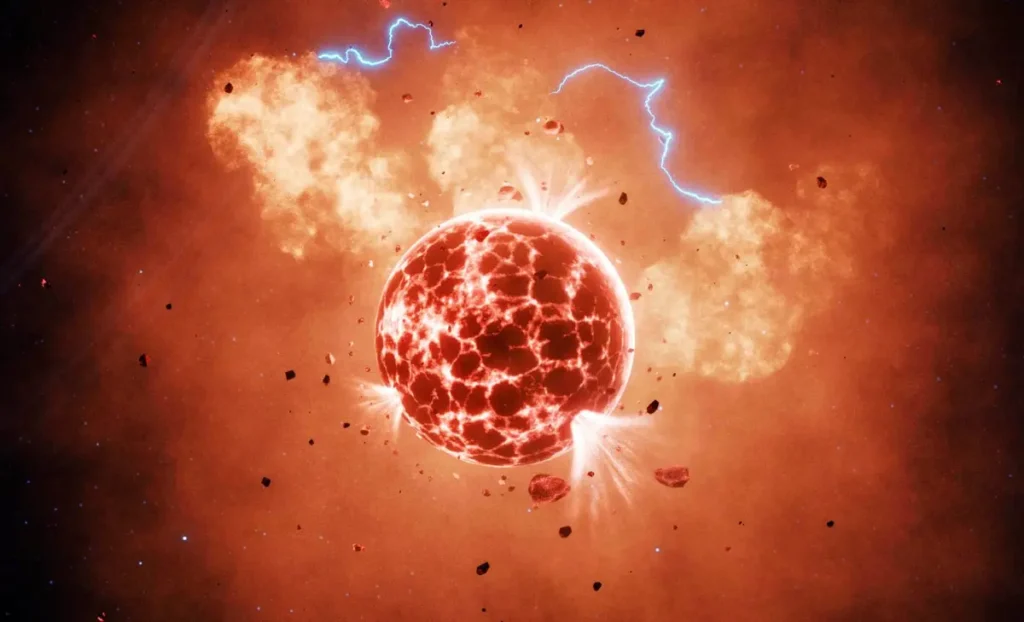Around a star just 635 light-years away, astronomers have uncovered further evidence of a highly volcanic moon. A significant cloud of sodium, indicative of volcanic activity, is orbiting an exoplanet known as WASP-49b, which itself orbits a yellow dwarf star named WASP-49.
How do researchers know the sodium originates from an exomoon? The exoplanet is a gas giant, unlikely to host volcanoes, and the sodium cloud’s movement doesn’t align with the planet’s orbit—consistent with the presence of a rocky volcanic moon.
“We think this is a crucial piece of evidence,” says astrophysicist Apurva Oza from the California Institute of Technology. “The cloud is moving contrary to what physics predicts if it were part of the planet’s atmosphere.”
Moons are expected to be abundant throughout the Milky Way. In our Solar System, moons vastly outnumber planets, with nearly 300 known compared to just eight planets.
However, evidence of these extrasolar moons has been scarce. Finding exoplanets is already challenging, and the signals from exomoons are often too faint to detect or can be explained by other phenomena. Initial discoveries in space typically involve extreme outliers with clear but limited explanations.
In the case of WASP-49b, a 2017 study revealed a sodium layer surrounding the gas giant at unusually high altitudes. In 2019, Oza and his team argued that this sodium likely originated from an orbiting exomoon, potentially more volcanic than Jupiter’s moon Io.
While volcanic exoplanets have been identified, they are generally rocky and exhibit characteristics indicating volcanism. Gas giants like WASP-49b don’t possess volcanoes, but there was a possibility that the sodium signature could result from planetary activity, such as atmospheric winds.
To validate their hypothesis of exolunar origins, Oza and his colleagues utilized the European Southern Observatory’s Very Large Telescope for observations over four nights.
They confirmed that the exoplanet has a mass 0.37 times that of Jupiter and a radius 1.1 times larger, completing an orbit around its Sun-like star every 2.8 days. However, the sodium cloud wasn’t always present; it appeared and disappeared irregularly, suggesting an ongoing production process.
Since neutral sodium photoionizes quickly near a star, its constant presence indicates active generation.
Though one hypothesis was that the sodium came from the exoplanet, the timing of the cloud’s appearance was out of sync with WASP-49b’s rotation, ruling out a direct link. Through computer modeling, the researchers determined that the observed signal aligns most closely with a volcanic exomoon orbiting WASP-49b approximately every eight hours.
This relationship mirrors that of Jupiter and Io, where gravitational forces from nearby moons likely influence the volcanic activity. Additionally, the exomoon’s proximity to WASP-49b suggests that, due to mass loss from volcanism, its orbit could decay over time, potentially leading to its eventual collision with the planet.


